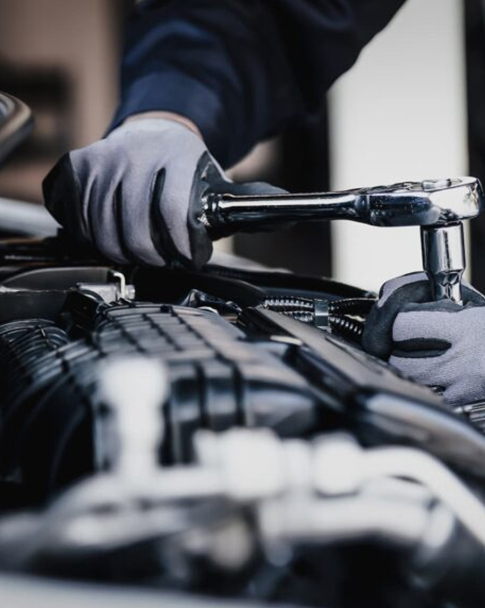Delivering Reliability in Extreme Desert Conditions
In the Middle East, where scorching temperatures, relentless dust storms, and unforgiving desert terrain push commercial vehicles to their limits, fleet operators face a unique set of challenges—none more critical than keeping their vehicles on the road and minimizing costly downtime. For one leading Middle Eastern logistics company, this challenge became increasingly urgent until they partnered with Fengyu to upgrade their heavy-duty tie rod ends. What followed was a transformative reduction in maintenance costs, enhanced safety, and a new standard for durability in extreme environments.
Client Profile: A Logistics Leader Battling Desert Extremes
Our client is a prominent logistics firm operating across the Middle East, with a fleet of 300+ heavy-duty commercial vehicles (including 18-wheelers, cargo trucks, and specialized transport vehicles). Their operations span remote desert highways, industrial zones, and urban delivery routes—all characterized by conditions that are hostile to automotive components:
- Daily temperatures ranging from 45°C to 55°C (113°F to 131°F) during summer, which degrades lubricants and weakens metal structures.
- Frequent dust storms that deposit fine, abrasive sand particles into steering systems, accelerating wear on moving parts.
- Uneven desert roads with loose gravel, which place extra stress on tie rod ends (a critical steering component that connects the steering rack to the wheels).
The Problem: Frequent Failures, Costly Downtime, and Safety Risks
The client’s tie rod ends were failing at an alarming rate: every 15,000 kilometers—a lifespan less than half of the industry average for heavy-duty vehicles in temperate regions. These failures triggered a cascade of issues:
- Unscheduled Downtime: Each tie rod end failure forced a truck off the road for 1–2 days, as the company had to source replacement parts and coordinate emergency repairs. With 300+ vehicles in operation, this translated to an average of 8–10 trucks out of service weekly, disrupting delivery schedules and delaying client shipments.
- Sky-High Monthly Costs: The combined expense of replacement parts, emergency repair labor, and lost revenue from idle trucks totaled $25,000 per month—a drain on the company’s bottom line that threatened its ability to compete in a tight logistics market.
- Critical Safety Concerns: Sudden tie rod end failures (often triggered by sand-induced wear or heat-related lubricant breakdown) compromised steering control, putting drivers at risk of accidents on desert highways—where emergency services are often hours away.
By 2022, the client knew they needed a specialized solution, not just a generic replacement part. That’s when they turned to Fengyu, a leader in custom-engineered automotive steering components with 30+ years of experience in extreme-environment applications.
Our Approach: From Analysis to Customization—Building a Tie Rod End for the Desert
Fengyu’s success with this client stemmed from a three-step, data-driven approach: we didn’t just “sell a part”—we solved a problem by understanding the root causes of failure and engineering a solution to match.
Step 1: Environmental & Failure Pattern Analysis
Before designing a custom tie rod end, our engineering team conducted a deep dive into the client’s operating conditions:
- We collected and tested failed tie rod ends from the client’s fleet, identifying two primary failure modes: lubricant degradation (caused by high temperatures) and seal failure (from sand abrasion, which allowed dust to infiltrate the ball joint).
- We partnered with the client to track vehicle routes, recording temperature fluctuations, dust storm frequency, and road conditions (e.g., gravel vs. paved) to quantify the stressors on each component.
- We compared the client’s usage data to industry benchmarks, confirming that their tie rod ends were failing 2–3x faster than expected due to the unique desert environment.
Step 2: Product Customization—Engineering for Durability
Based on our analysis, we redesigned our heavy-duty tie rod end to address the client’s specific pain points:
- Special High-Temperature Grease: We formulated a proprietary lubricant that retains its viscosity (thickness) at temperatures up to 60°C (140°F)—far exceeding the heat resistance of standard greases. This prevented the “run-off” that caused metal-on-metal friction in the client’s old parts.
- Reinforced Dust Boots: We replaced standard rubber dust boots with a dual-layer EPDM rubber composite—a material resistant to both sand abrasion and UV damage. The boots also featured a tighter seal around the ball joint, blocking even fine desert dust from entering.
- Hardened Steel Construction: We upgraded the tie rod end’s body and ball joint to chromium-molybdenum steel (a high-strength alloy used in aerospace and heavy machinery), which offers 40% greater wear resistance than the carbon steel used in generic parts. We also added a zinc-nickel coating to prevent corrosion from occasional desert rain or humidity.
-
Step 3: Rigorous Testing—Proving Performance Before Deployment
We didn’t just assume our custom tie rod end would work—we put it through the same conditions the client’s trucks face, in our state-of-the-art testing facility:
- 50,000km Simulated Desert Testing: We mounted the custom tie rod ends on a dynamometer (a machine that mimics real-world driving) and ran them for 50,000km under simulated desert conditions—including high temperatures, sand injection, and rough road vibrations.
- Extreme Temperature Cycling: We exposed the parts to 1,000 cycles of temperature swings (from -10°C to 60°C) to test for material fatigue, ensuring they wouldn’t crack or warp in the Middle East’s day-night temperature shifts.
- Sand Abrasion Resistance Testing: We blasted the dust boots with fine desert sand at 80km/h for 100 hours—equivalent to 2 years of exposure to dust storms—to verify the seals would hold.
Only after the custom tie rod ends passed all tests (with zero signs of wear or failure) did we ship the first batch to the client for pilot testing.
The Outcome: 3x Longer Lifespan, $150k Annual Savings, and Zero Failures
The client initially installed Fengyu’s custom tie rod ends on 20 of their most heavily used trucks in Q1 2023. By Q4 2023, the results were undeniable—and the client rolled out the parts to their entire fleet:
- Service Intervals Tripled: The custom tie rod ends lasted 45,000km—three times longer than the client’s previous parts. This meant fewer repairs, less time spent in the shop, and more trucks on the road.
- Zero Catastrophic Failures: Over 24 months of use, not a single Fengyu tie rod end failed unexpectedly. This eliminated the safety risks of sudden steering issues and gave drivers (and fleet managers) peace of mind.
- $150,000 in Annual Maintenance Savings: With fewer replacements, less emergency repair labor, and minimal downtime, the client’s monthly maintenance costs dropped from $25,000 to just $12,500—a 50% reduction, or $150,000 saved annually.
By 2024, the client reported that their fleet’s on-time delivery rate had improved by 18%—a direct result of fewer breakdowns—and that driver satisfaction had risen, thanks to the more reliable vehicles.
Why It Worked: Fengyu’s Expertise in Solving Unique Challenges
This success wasn’t accidental—it was the result of three core strengths that set Fengyu apart in the automotive aftermarket:
- 30+ Years of Material Expertise: Our team has decades of experience working with high-performance metals, lubricants, and seals—knowledge that allowed us to select materials specifically suited to desert conditions, not just “off-the-shelf” options.
- Willingness to Customize: Unlike competitors who only offer standard parts, Fengyu embraces customization. We don’t force clients to adapt to our products—we adapt our products to their needs.
- Comprehensive Testing Capabilities: Our testing facility lets us validate performance before parts ever reach a client’s fleet. This “test first, deploy later” approach ensures we deliver on our promises, every time.
For fleet operators in extreme environments—whether deserts, tundras, or coastal regions—Fengyu’s heavy-duty tie rod ends prove that the right part can transform not just maintenance costs, but an entire operation’s efficiency and safety.


